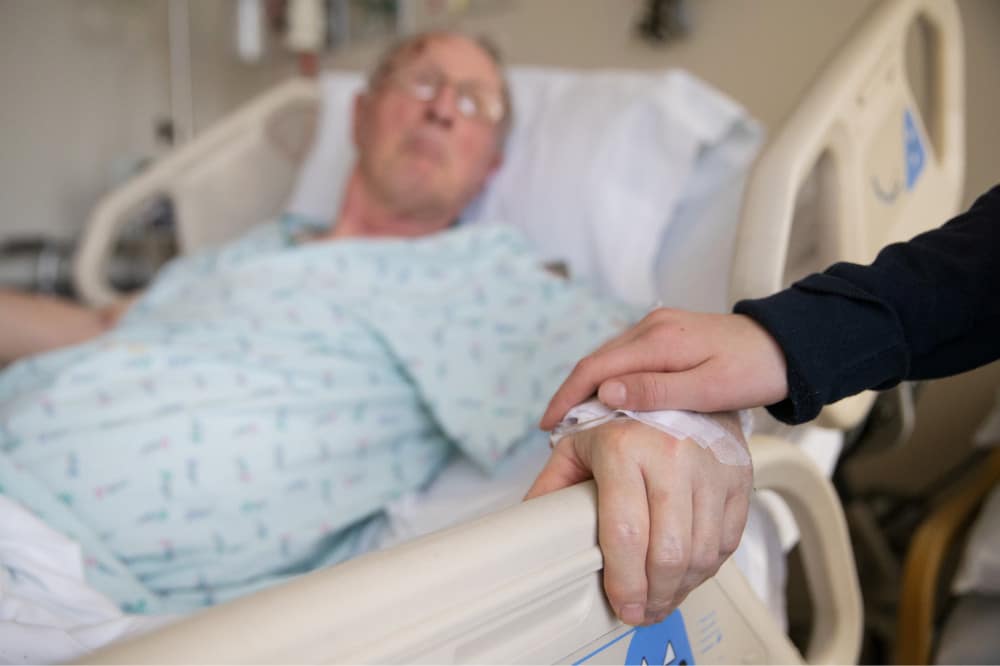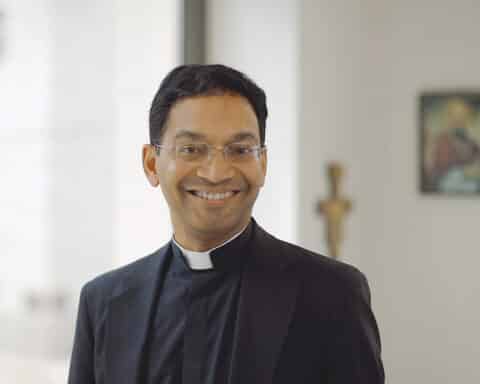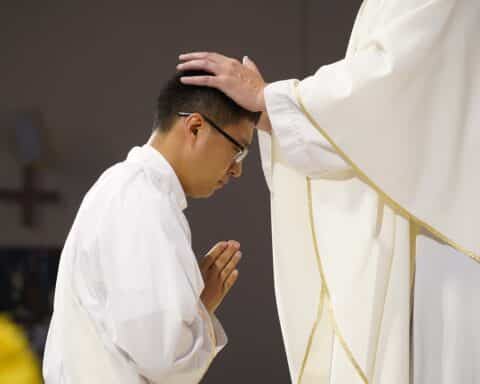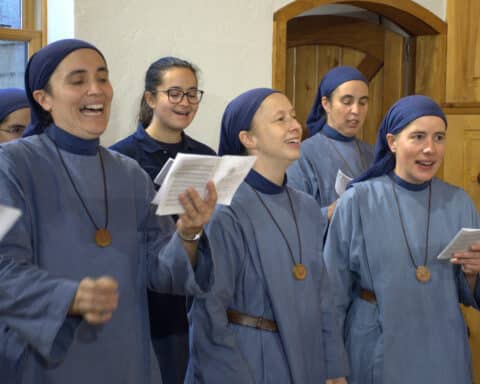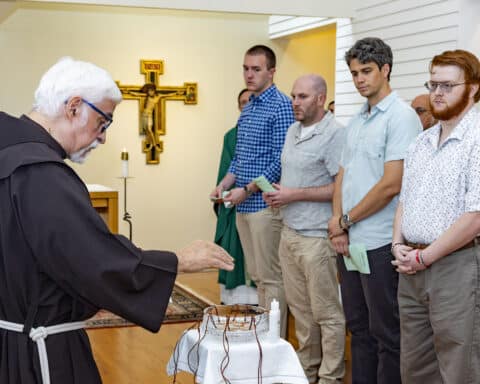Health care and education have been natural missions for Catholic religious throughout history. As the Archbishop of Caesarea, Basil the Great is credited with founding the first public hospital in 367, and Pope Innocent III in 1198 urged wealthy Christians to build hospitals in every town. As our own country grew, communities of religious women opened hospitals and schools across North America.
According to the Catholic Health Association, the Catholic health ministry is the largest nonprofit health care provider in the United States. There are 630 Catholic hospitals and 1,600 long-term care and other health facilities with many sisters and priests serving in a variety of capacities.
Health care
The Religious Sisters of Mercy of Alma, Michigan, are dedicated to the spiritual and corporal works of mercy, especially in the areas of education and health care. Sister Mary Rachel Nerbun, M.D., is an internal medicine physician practicing at a free clinic sponsored by Saint Francis Health System in Tulsa, Oklahoma. She received her medical training after joining the community.
“I believe my witness as a religious physician provides a unique presence, both ministering to those I serve, and to other health care providers,” Sister Mary Rachel said. “I am a reminder that there is more to life than worldly concerns we face. Our lives are a journey directed toward a higher good: God alone.”
Read more from our Spring Vocations Special Section here.
Sister Marysia Weber, D.O., another member of the Religious Sisters of Mercy, who is certified in psychiatry and neurology, was in the middle of her rotations for cardiology in 1982 at Sacred Heart Mercy Health Care Clinic in Alma.
“To my surprise, one of the physicians was a Religious Sister of Mercy of Alma,” Sister Marysia said. “The clinic is owned and run by them with other sister physicians, nurses and nurse practitioners. It has a beautiful chapel with Our Lord present in the tabernacle, the Divine Physician amongst us who we depend on.”
Sister Marysia was invited to join the sisters for prayers and felt called to become one of them. She worked at the clinic for 25 years and is currently the director of consecrated life for the Archdiocese of St. Louis, helping to care for the 3,500 consecrated religious priests, brothers and sisters in the archdiocese.
“As a sister-physician for 37 years, I have had the privilege of accompanying persons in something we all share: suffering,” Sister Marysia said. “While the world and much of medicine views suffering as meaningless, there is a mysterious meaning to suffering. That mystery is love. Through his suffering and dying on the cross, Jesus offered us the greatest gift of love: our redemption. When a patient suffers, I pray that he or she takes solace from the fact that Jesus is there.”
Father Stefan Starzynski has been a full-time chaplain of Inova Fairfax hospital in Virginia since June 2015, with residence at St. Ambrose Catholic Church. According to him, hospital ministry is an essential part of the priestly ministry, especially to administer the sacraments.
“We help people with their fears, anoint them before surgery and give them comfort,” he said. “I pray for them and ask them to offer up their sufferings so they are praying for other people. If a bishop ever has someone losing their sense of identity and needs to be renewed in their priesthood, hospital ministry might be a good place. It will help remind them of why their vocation is important.”
Education
Having priests and sisters in schools can help encourage new vocations through their faithful witness. For instance, in 1994, the late Msgr. Gerald Walsh, vocations director for the Diocese of Bismarck, North Dakota, arranged for young priests to serve as chaplains and teachers at the diocesan high schools. The practice continues to this day, and vocations have doubled since 1994. Currently, there are 22 men in the seminary.
“To have priests and dedicated religious women teaching our young people is, in my opinion, essential if a diocese is serious about promoting vocations,” Bishop David Kagan of Bismarck said. “Young people easily identify with the priests and sisters who teach them and show them that a priest and sister can be very happy and fulfilled committing their lives to Christ. It encourages students to consider vocations for themselves.”
Sister Mary Joseph Campbell, a sister from the Dominican Sisters of Mary in Ann Arbor, Michigan, came to Bismarck in 2019 to work toward establishing a branch of the community in the city. She teaches sixth grade religion at St. Mary’s Academy in the morning, and in the afternoon, she teaches formation classes to the new sisters.
“When I stepped into the classroom, it fit like a glove,” she said, “It’s such an incredible thing to watch students grow. By being in their lives every day, we can be a formator.”
Students are intrigued by her long habit and amazed that she doesn’t have pocket money to even buy a candy bar. “It’s radical to them, but they see we are content,” she said.
“I’m in this classroom for you,” Sister Mary Joseph tells her students. “I gave my life up for the service in the Church, and this is what I get to do — teach you.”
She has found the students to be very respectful in her classroom. “If you are giving God everything, you can ask them to do it, too. Our whole goal is to point them to heaven.”
Patti Maguire Armstrong writes from North Dakota.

